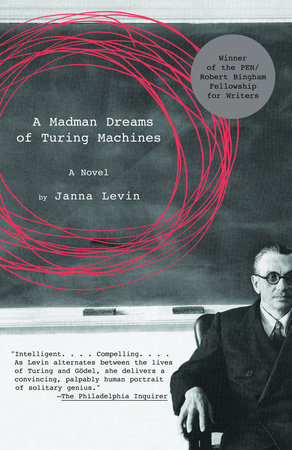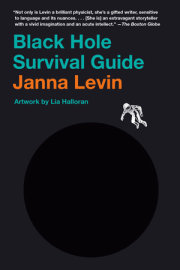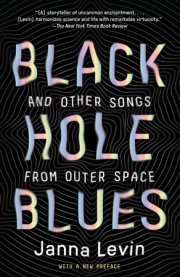Vienna, Austria. 1931The scene is a coffeehouse. The Café Josephinum is a smell first, a stinging smell of roasted Turkish beans too heavy to waft on air and so waiting instead for the more powerful current of steam blown off the surface of boiling saucers fomenting to coffee. By merely snorting the vapors out of the air, patrons become overstimulated. The café appears in the brain as this delicious, muddy scent first, awaking a memory of the shifting room of mirrors second—the memory nearly as energetic as the actual sight of the room, which appears in the mind only third. The coffee is a fuel to power ideas. A fuel for the anxious hope that the harvest of art and words and logic will be the richest ever because only the most fecund season will see them through the siege of this terrible winter and the siege of that terrible war. Names are made and forgotten. Famous lines are penned, along with not so famous lines. Artists pay their debt with work that colors some walls while other walls fall into an appealing decrepitude. Outside, Vienna deteriorates and rejuvenates in swatches, a motley, poorly tended garden. From out here, the windows of the coffeehouse seem to protect the crowd inside from the elements and the tedium of any given day. Inside, they laugh and smoke and shout and argue and stare and whistle as the milky brew hardens to lace along the lip of their cups.A group of scientists from the university begin to meet and throw their ideas into the mix with those of artists and novelists and visionaries who rebounded with mania from the depression that follows a nation’s defeat. The few grow in number through invitation only. Slowly their members accumulate and concepts clump from the soup of ideas and take shape until the soup deserves a name, so they are called around Europe, and even as far as the United States, the Vienna Circle.At the center of the Circle is a circle: a clean, round, white marble tabletop. They select the Café Josephinum precisely for this table. A pen is passed counterclockwise. The first mark is made, an equation applied directly to the tabletop, a slash of black ink across the marble, a mathematical sentence amid the splatters. They all read the equation, homing in on the meaning amid the disordered drops. Mathematics is visual not auditory. They argue with their voices but more pointedly with their pens. They stain the marble with rays of symbolic logic in juicy black pigment that very nearly washes away.They collect here every Thursday evening to distill their ideas—to distinguish science from superstition. At stake is Everything. Reality. Meaning. Their lives. They have lost any tolerance for ineffectual and embroidered attitudes, for mysticism or metaphysics. That is putting it too dispassionately. They
hate mysticism and metaphysics, religion and faith. They
loathe them. They want to separate out truth. They feel, I imagine, the near hysteria of sensing it just there, just beyond the nub of their fingers at the end of arms stretched to their limits.I’m standing there, looking three hundred and sixty degrees around the table. Some of them stand out brighter than the others. They press forward and announce themselves. The mathematician Olga Hahn-Neurath is here. She has a small but valuable part to play in this script as does her husband, Otto Neurath, the over- sized socialist. Most important, Moritz Schlick is here to form the acme and source of the Circle. Olga, whose blindness descended with the conclusion of an infection, smokes her cigar while Otto drinks lethal doses of caffeine and Moritz settles himself with a brush of his lapels. The participation of the others present today is less imperative. A circle can be approximated by a handful of discrete points and the others will not be counted. There are perhaps more significant members of the Circle over the years, but these are the people who glow in color against my grainy black-and-white image of history. A grainy, worn, poorly resolved, monochromatic picture of a still scene. I can make out details if I look the shot over carefully. Outside, a wind frozen in time burns the blurred faces of incidental pedestrians. Men pin their hats to their heads with hands gloved by wind-worn skin. Inside a grand mirror traps the window’s images, a chunk of animated glass.In a plain, dark wooden chair near the wall, almost hidden behind the floral arm of an upholstered booth, caught in the energy and enthusiasm of that hopeful time as though caught in a sandstorm, is Kurt Gödel.In 1931 he is a young man of twenty-five, his sharpest edges still hidden beneath the soft pulp of youth. He has just discovered his theorems. With pride and anxiety he brings with him this discovery. His almost, not-quite paradox, his twisted loop of reason, will be his assurance of immortality. An immortality of his soul or just his name? This question will be the subject of his madness. Can I assert that suprahuman longevity will apply only to his name? And barely even that. Even now that we live under the shadow of his discovery, his name is hardly known. His appellation denotes a theorem; he’s an initial, not a man. Only here he is, a man in defense of his soul, in defense of truth, ready to alter the view of reality his friends have formulated on this marble table. He joins the Circle to tell the members that they are wrong, and he can prove it.Gödel is taciturn, alone even in a crowd, back against the wall, looking out as though in the dark at the cinema. He is reticent but not unlikable. The attention with which his smooth hair, brushed back over his head away from his face, is creamed and tended hints at his strongest interest next to mathematics, namely women. His efforts often come to fruition, only adding to his mystery for a great many of the mathematicians around him. And while he has been known to show off a girlfriend or two, he keeps his real love a secret. His bruised apple, his sweet Adele.There is something sweet about his face too, hidden as it is behind thick-rimmed goggle glasses, inverted binoculars, so that those who are drawn into a discussion of mathematics with him feel as though they are peering into a blurry distant horizon. The completely round black frames with a thick nosepiece have the effect of accentuating his eyes or replacing them with cartoon orbs—a physical manifestation of great metaphorical vision. They leave the suggestion, with anyone looking in, that all emphasis should be placed there on those sad windows or, more important, on the vast intellectual world that lies just beyond the focus of the binocular lenses.He speaks only when spoken to and then only about mathematics. But his responses are stark and beautiful and the very few able to connect with him feel they have discovered an invaluable treasure. His sparse counsel is sought after and esteemed. This is a youth of impressive talent and intimidating strength. This is also a youth of impressive strangeness and intimidating weakness. Maybe he has no more weaknesses than the rest of us harbor, but his all seem so extreme—hypochondria, paranoia, schizophrenia. They are even more pronounced when laid alongside his incredible mental strengths. They appear as huge black voids, chunks taken out of an intensely shining star.He is still all potential. The potential to be great, the potential to be mad. He will achieve both magnificently.Everyone gathered on this Thursday, the rotating numbers accounting for some three dozen, believe in their very hearts that mathematics is unassailable. Gödel has come tonight to shatter their belief until all that is left are convincing pieces that when assembled erect a powerful monument to mathematics, but not an unassailable one—or at least not a complete one. Gödel will prove that some truths live outside of logic and that we can’t get there from here. Some people—people who probably distrust mathematics—are quick to claim that they knew all along that some truths are beyond mathematics. But they just didn’t. They didn’t
know it. They didn’t prove it.Gödel didn’t
believe that truth would elude us. He
proved that it would. He didn’t invent a myth to conform to his prejudice of the world—at least not when it came to mathematics. He discovered his theorem as surely as if it was a rock he had dug up from the ground. He could pass it around the table and it would be as real as that rock. If anyone cared to, they could dig it up where he buried it and find it just the same. Look for it and you’ll find it where he said it is, just off center from where you’re staring. There are faint stars in the night sky that you can see, but only if you look to the side of where they shine. They burn too weakly or are too far away to be seen directly, even if you stare. But you
can see them out of the corner of your eye because the cells on the periphery of your retina are more sensitive to light. Maybe truth is just like that. You can see it, but only out of the corner of your eye.
Copyright © 2006 by Janna Levin. All rights reserved. No part of this excerpt may be reproduced or reprinted without permission in writing from the publisher.








